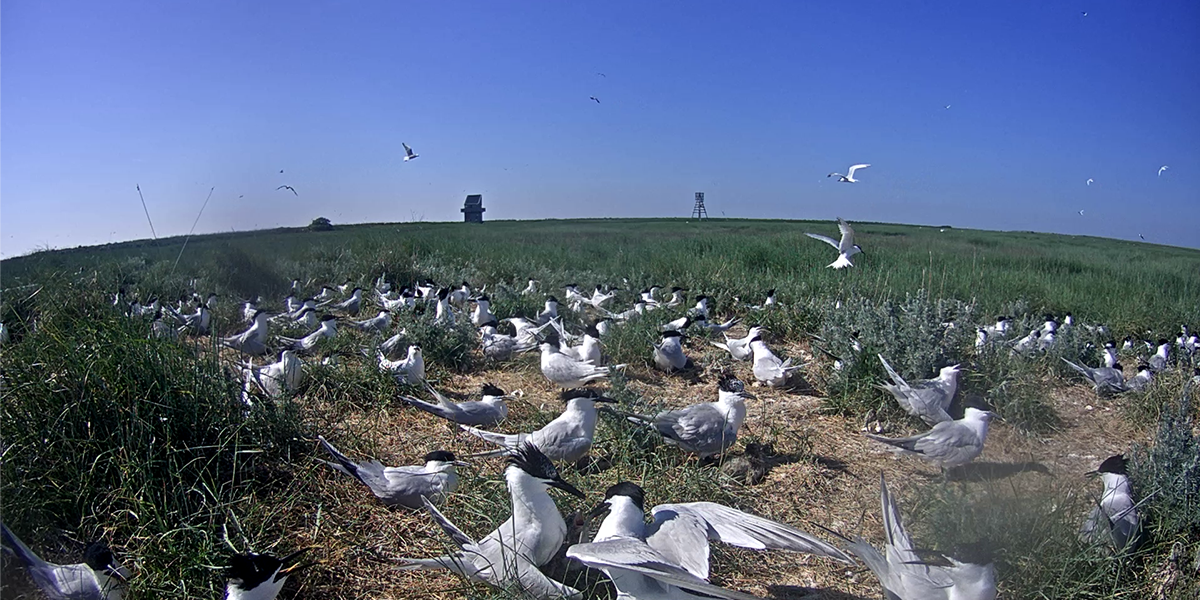Avian nutrient pump
Do birds impact the formation of their own breeding islands? Small sandy islands are formed by vegetation-sedimentation feedbacks. In many tidal systems, including the Wadden Sea, these sandy islands host large populations of coastal birds for breeding and roosting. We propose that these birds collectively transport large quantities of marine-derived nutrients to these islands, thereby fuelling vegetation productivity and potential biogeomorphic feedbacks. To investigate this hypothesis, we will combine analyses on existing biological and morphological data of these small islands and their avian inhabitants, together with data collection during field surveys and manipulative experiments.
|
|
|
By combining expertise on birds, vegetation and island dynamics, we will advance an integrative perspective on coastal systems. |
| Valérie Reijers, Kees Camphuijsen |

Project Team

Project description
Back-barrier islands are situated in the lee of ocean-facing barrier chains. Their sheltered position inhibits constant sediment input and instead, island dynamics depends on storm-driven overwash processes. Commonly uninhabited by people, these islands play a central role in global flyway networks, hosting billions of migratory shore- and seabirds1.
However, human disturbances, predator introduction, accelerated sea-level rise, and higher frequency and intensity of storm surges concurrently threaten these islands and associated species1,2. Even though island development relies on sediment stabilizing interactions steered by vegetation2, their sandy soils are generally nutrient-limited, constraining vegetation growth3. We therefore question: what fuels the vegetation productivity that drives this internal feedback engine?
We propose that the large populations of birds that use sandy shoals and islands as roosts or breeding sites, pump tonnes of external marine-derived nutrients via their faecal outputs (i.e. guano) to these islands. Seabirds play a critical role in the global nitrogen (N) cycle, by transferring ~600 Gg N annually, comparable to global fixation by rice or lightning4. Guano has been demonstrated to promote ecosystem functioning (e.g. primary productivity, biodiversity)5 on rocky islands. Surprisingly, this avian nutrient pump has hitherto been neglected for soft sediment islands, even though island and habitat structuring processes depend on vegetation-mediated feedbacks.
In this project, we aim to unravel the feedback interactions between birds, vegetation and geophysical processes that steer back-barrier island morphodynamics and ecological functioning. Specifically, we hypothesize that (i) guano promotes vegetation growth, which in turn decreases soil erodibility and enhances overall island stability and (ii) island stability and vegetation development in turn determine habitat suitability for breeding and roosting birds (Fig. 1). We will combine existing bird abundance data and remote sensing data together with data collection during field surveys and manipulative experiments. To study these interactions, we will focus on small back-barrier islands in the Wadden Sea (e.g., Griend, Richel, Zuiderduin, Memmert).

Fig. 1: Schematic representation of the hypothesized trophic and biogeomorphic interactions between birds, vegetation and island morphology we aim to investigate in this project.
References:
- Piersma, T., et al., Simultaneous declines in summer survival of three shorebird species signals a flyway at risk. J. Appl. Ecol., 2016. 53, 479-490.
- Durán Vinent, O. and L.J. Moore, Barrier island bistability induced by biophysical interactions. Nat. Clim. Change, 2015. 5, 158-162.
- Reijers, V.C., et al., Resilience of beach grasses along a biogeomorphic successive gradient: resource availability vs. clonal integration. Oecologia, 2019. 192, 201-212.
- Otero, X.L., et al., Seabird colonies as important global drivers in nitrogen and phosphorus cycles. Nat. Commun., 2018. 9, 1-8.
- Graham, N.A., et al., Seabirds enhance coral reef productivity and functioning in the absence of invasive rats. Nature, 2018. 559, 250-253.

Connected themes
- Our Dynamic Coasts
